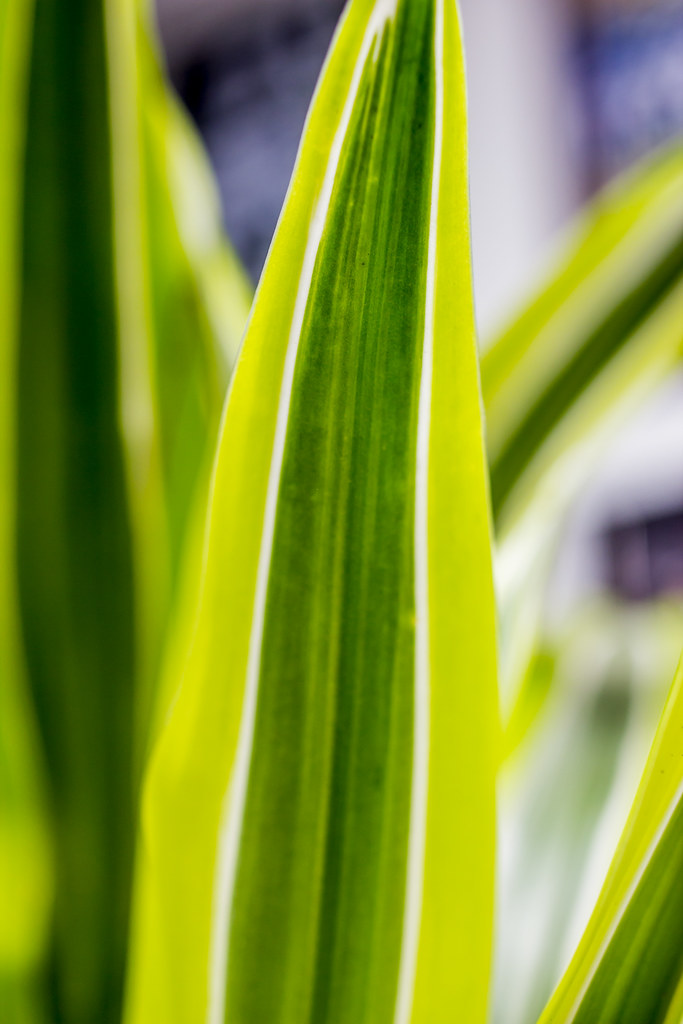
As I have begun to unclutter, I also want to start incorporating indoor house plants as it is nature’s best filter in the home.
In 1989, NASA conducted a Clean Air Study and created a list of the top indoor houseplants that remove toxic agents such as benzene, formaldehyde and tricholoroethylene from the air, and also helping neutralize the effects of sick building syndrome.
According to NASA, one should have one air-purifying plant for every 100 square feet of space.
One of the indoor plants I have in my home is the Dracaena Warneckii Lemon Lime house plant.

There are many different types of Dracaena plants that one will find at their local nursery or department store nursery.
One will find Dracaena Fragrans (a.k.a. the corn plant), Dracaena Marginata (a.k.a. the dragon tree, with its green and red-edged leaves), Dracaena Reflexa (such as “Anita”, with its narrower leaves) with wooden branches and also the Dracaena Sanderiana (a.k.a. the Lucky Bamboo Plant).
The one I was looking for is Dracaena Deremensis or “Warneckei” (also, spelled as “warneckii”). The “Janet Craig” known for its full dark green leaves,”Dorado” with dark green leaves edged with chartreuse at the edges, “Florida Beauty” with yellow splotches, “Hawaiian Sunshine” with its light green stripe through the center, “Malaica” with white, gray and light green and my favorite is the “Lemon Lime” with its chartreuse on the edges, white and then its full green in the center.
I chose the Dracaena Warneckii Lemon Lime which helps remove thrichloroethylene, formaldehyde, and benzene from the air but also for its alluring color.
I debated with getting the Janet Craig as I like solid color plants but the chartreuse of the Dracaena Warneckii Lemon Lime drew my attention instantly.

The Dracaena Warneckii Lemon Lime can grow very tall, but it is a slow grower.
The plant likes bright indirect light and some can leave it out for morning sun. And the plant should only be watered when the soil is dry and is a half below the soil surface. Too much sun can burn the leaves, too much bright light causes the colors of the leaves to fade but it does well under artificial lighting.
To prevent root rot, it’s best to practice reduced watering if grown indoors. Some don’t water theirs for a few months but if you don’t water enough, you will see yellow spots, blotches or bumps on the leaves for the lower foliage. Tips online lean to having the top 50% of the soil to dry out before watering.
If you see brown tips, you can trim them with scissors. If it’s half the leaf, remove the leaf entirely.
Also, clean the leaves and like other plants, keep an eye on insects to prevent insect growth (I’ve been reading that Mealy Bugs and spider mites are what to look for).
The plant is recommended for regular fertilization ala indoor plant food monthly in the spring and summer at 1/2 the recommended length. It is not necessary to feed Dracaenas in the fall or winter.
And the plant prefers warmer temperatures and high humidity, and well do very well in indoor home humidity.
Also, if you see tan to dark brown areas or yellow stripes on the leaves, it can be flouride toxicity and reddish/tan spots with yellow halos on new leaves are due to leaf spot disease.
I read that the Dracaena Warnecki Lemon Lime does bloom if exposed to very bright light during the summer but rarely as indoor potted plants.
According to the ASPCSA, the plant is also poisonous to cats and dogs.
We’ll see how things go with taking care of this plant! Really happy that I bought it!
